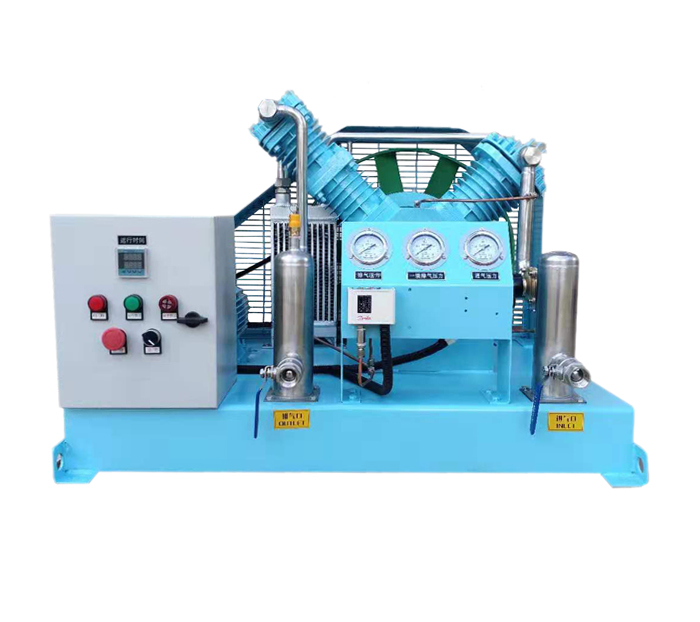In the gas industry, if the user has requirements for the pressure of oxygen, there are generally two ways to achieve it. First, through the heat exchange with liquid oxygen through a heat exchanger, the liquid oxygen is rapidly vaporized to form high-pressure oxygen. Second, the oxygen pressure is compressed to a specified pressure by an oxygen compressor. An oxygen compressor is a compressor designed to compress oxygen. Working principle: Oxygen accounts for 20% in the air, nitrogen accounts for nearly 80%, and the rest are rare gases. The oxygen generator is actually a compressor, equipped with special accessories such as molecular sieves. When working, the oxygen machine compresses and cools the air to a liquid state, and uses the different vaporization temperatures of liquid oxygen and liquid nitrogen and molecular sieves to separate them, which makes liquid oxygen, which can be bottled and sold. The by-product is nitrogen.
An oxygen compressor is a compressor used to pressurize and deliver oxygen. Oxygen is a violent oxidant that can easily cause combustion and explosion. When designing and using an oxygen compressor, attention should be paid to: (1) The compressed gas components are strictly prohibited from contacting with oil. The cylinder is lubricated with water and glycerin without oil or lubricated without oil, and oil is not allowed to be stained during maintenance. It must be cleaned and wiped with solvent before assembly. (2) Due to the high humidity when lubricated with water, the temperature rises again during compression, and the oxygen from the wet gas cabinet is corrosive, so the materials in contact with oxygen must be corrosion-resistant, and require good thermal conductivity and electrical conductivity. The cylinder is generally made of phosphor bronze, the piston is made of aluminum alloy, and the intercooler is made of copper or stainless steel.





